A Comprehensive Guide for Homeowners –
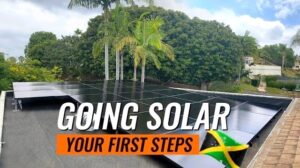
As electricity costs continue to rise in Jamaica, many homeowners are exploring solar energy as a sustainable and cost-effective alternative. This guide provides an in-depth look at the essentials of solar power systems, tailored for Jamaican households, to help you make an informed decision.
Understanding Your Current Energy Consumption.
Before transitioning to solar in Jamaica, it’s crucial to assess your home’s energy usage. A typical Jamaican household consumes approximately 250–300 kilowatt-hours (kWh) per month. With residential electricity rates around JMD 45.97 per kWh, this translates to monthly bills ranging from approximately JMD $12,000 to JMD $15,000.
Common Household Appliances:
Air Conditioning Unit: A 12,000 BTU unit can significantly impact your energy consumption.
Refrigerator: Runs continuously, contributing to consistent energy use.
Televisions: Multiple units increase overall consumption.
Washing Machine: Usage frequency affects energy usage.
Designing Your Solar Power System
A Smart Investment for Long-Term Savings –
With rising energy costs, investing in a solar power system is one of the smartest moves homeowners can make. By offsetting your electricity bills, reducing dependence on the grid, and contributing to a cleaner environment, a well-designed solar power system offers both financial and environmental benefits. Here’s how you can design a system tailored to your energy needs.
Basic System Setup for Monthly Usage of 250–300 kWh
If your Jamaican household’s energy usage averages between 250 and 300 kWh per month, the following components will suffice:
- Solar Panels
- Quantity: 8 panels
- Capacity per Panel: 550–610 Watts
This configuration generates adequate power for an average Jamaican household’s energy needs.
- Solar Inverter
- Type: 8 kW Smart Hybrid Inverter
This inverter handles current energy requirements while allowing for future increases due to additional appliances or higher usage.
- Type: 8 kW Smart Hybrid Inverter
- Battery Storage
- Capacity: 10 kWh Lithium-Iron Phosphate Battery
This battery stores enough energy to meet nighttime and backup power needs effectively.
- Capacity: 10 kWh Lithium-Iron Phosphate Battery
Advanced System for High Energy Users
For Jamaican households with monthly electricity bills above $35,000 JMD or energy usage of 600 kWh, and major appliances such as:
- Refrigerators
- Washer and dryer
- Air conditioning systems (2 × 12,000 BTU + 1 × 24,000 BTU or 1 × 36,000 BTU)
A more robust system is recommended:
- Solar Panels: 14–16 panels (550–610 Watts each)
- Solar Inverter: 8 kW or 10 kW Smart Hybrid Inverter
- Battery Storage: 2 × 10 kWh Lithium-Iron Phosphate Batteries
Cost Breakdown
The estimated cost for these systems varies depending on the quality of the components:
| System Type | Cost (JMD) | Premium Cost (JMD) |
|---|---|---|
| Basic System (8 panels) | $1.3–$1.5M (low to mid-level products) | $1.6–$1.8M (premium products with longer warranties) |
| Advanced System (14 panels) | $2.3–$2.5M (low to mid-level products) | $2.6–$3.0M (premium products with longer warranties) |
Note: Installation costs are not included in these estimates.
Solar Power Generation: Daily and Monthly Calculations
To calculate the daily and monthly power generation for a solar system with 14 panels (550–610 Watts each) while accounting for a 25% loss factor, follow these steps:
Step 1: System Capacity
The total capacity of the solar panels is determined by the number of panels and the capacity of each panel. We’ll calculate for the lower and upper range of panel wattage (550 W to 610 W).
- Lower Capacity (550 W per panel): 14×550W = 7,700W = 7.7kW
- Upper Capacity (610 W per panel): 14×610W = 8,540W = 8.54kW
Step 2: Accounting for Loss Factor
Solar systems typically lose about 25% of potential generation due to factors such as panel inefficiency, inverter losses, shading, and environmental conditions.
- Net Usable Power: Usable Capacity=Gross Capacity×(1−0.25)
- Lower Capacity: 7.7 kW×0.75 = 5.775 kW
- Upper Capacity: 8.54 kW×0.75 = 6.405 kW
Step 3: Solar Hours Per Day
The amount of energy generated depends on the average solar hours per day in your location. For this calculation, we’ll use an average of 5 hours per day (9:30 A.M – 2:30 P.M – representing peak solar generation period), which is typical for sunny regions.
- Daily Generation: Daily Generation=Usable Capacity×Solar Hours
- Lower Capacity: 5.775 kW×5 hours = 28.875 kWh/day
- Upper Capacity: 6.405 kW×5 hours = 32.025 kWh/day
Step 4: Monthly Generation
To calculate the monthly generation, multiply the daily generation by 30 days:
- Lower Capacity: 28.875 kWh/day×30 = 866.25 kWh/month
- Upper Capacity: 32.025 kWh/day×30 = 960.75 kWh/month
Summary Table
| Parameter | Lower Range | Upper Range |
|---|---|---|
| Gross System Capacity | 7.7 kW | 8.54 kW |
| Usable Capacity (after 25% loss) | 5.775 kW | 6.405 kW |
| Daily Power Generation | 28.875 kWh | 32.025 kWh |
| Monthly Power Generation | 866.25 kWh | 960.75 kWh |
For Clarity
- Gross Capacity: Theoretical maximum output of the solar panels.
- Usable Capacity: The practical output after accounting for a 25% loss factor.
- Solar Hours: Average daily sunlight hours during which panels operate efficiently (varies by location).
This system can generate approximately 866–961 kWh per month, which is sufficient to cover most high-energy households’ needs, including refrigerators, washers, dryers, and multiple air conditioning units.
Selecting Quality Solar Panels
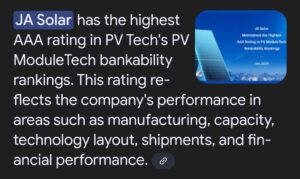
For a high-performance solar installation, the following advanced technologies are critical:
- N-Type Technology
- Advantages: Higher efficiency, lower light-induced degradation (LID), and longer lifespan.
- Best for: All project types, especially in high-temperature and humid Caribbean climates.
- TOPCon (Tunnel Oxide Passivated Contact)
- Advantages: Improved conversion efficiency, enhanced bifaciality, and excellent temperature coefficients.
- Best for: Utility-scale projects requiring peak output and long-term reliability.
- Back Contact Panels
- Advantages: Aesthetic appeal with no front-side busbars, offering enhanced performance and design flexibility.
- Best for: Premium residential or commercial installations.
- AAA and AA Categorized Modules
- Why Important? These modules undergo rigorous testing for performance, durability, and reliability, ensuring minimal defects and exceptional output.
- Top Manufacturers: JA Solar, Jinko, Trina, and LONGi are pioneers in delivering AAA-grade modules.
Understanding solar panel quality is vital for maximizing your investment. Panels are categorized based on performance, reliability, technology maturity and R&D:
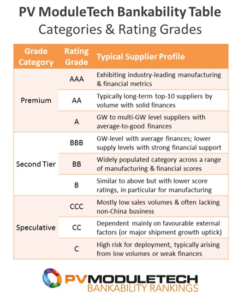
- Premium Solar Panels (AAA, AA, A Categorized):
- Cost: USD $180–$200 (approximately JMD $28,000–$32,000) per panel
- Features: High efficiency, durability, and robust warranties
- Lower-Quality Panels (BBB and Below):
- Cost: Should be lower than premium solar panels
- Ranging from USD $100–$150 (approximately JMD $15,000–$23,000) per panel
- Risks: Potential for reduced performance and longevity
Note: Some suppliers may overcharge for lower-quality panels due to consumer unawareness. Always verify the panel’s grade and compare prices across multiple vendors.
Choosing the BEST Solar Inverter: Spotlight on Deye
For Jamaican households, Deye inverters are highly recommended due to their:
- Split-Phase Output : Provides both 110V and 220V from a single unit, eliminating the need for external transformers.
- Range of Power Outputs: Available in 5 kW, 6 kW, 8 kW, 10 kW, and 12 kW, catering to various household needs.
- User-Friendly Monitoring: Compatible with applications like Deye-Cloud and Solarman-Smart for real-time performance tracking.
- Reliability and Support: Known for fewer operational issues and easier access to replacement parts.
Notably, Deye manufactures the Sol-Ark brand, a premium product in the USA, offering similar performance but at a much higher price point.
Investment Overview
The initial investment in a solar power system varies based on component quality:
- Low to Mid-Level Products:
- Estimated Cost (Excluding Installation): JMD $1.3 million to JMD $1.5 million
- Premium Products:
- Estimated Cost (Excluding Installation): Approximately JMD $2 million
Considerations:
- Installation Costs: Vary depending on system complexity and installer rates.
- Long-Term Savings: Significant reduction or elimination of monthly electricity bills can offset initial costs over time.
- Additional Components: Other items such as a manual or auto transfer switch, breakers and protection devices for both AC and DC voltages are required. The correct gauge DC and AC cables are needed, as well as the right grounding solution.
Benefits of Going Solar
- Cost Savings: Drastically reduce or eliminate electricity bills.
- Energy Independence: Protection against rising energy costs and grid unreliability.
- Environmental Impact: Lower carbon footprint and contribution to sustainable energy.
- Property Value: Potential increase in property value due to renewable energy integration.
Final Thoughts
Transitioning to solar energy in Jamaica is a strategic investment that offers financial, environmental, and lifestyle benefits. By understanding your energy needs, selecting quality components, and being aware of market practices, you can make informed decisions that lead to long-term satisfaction and savings.
A solar power system is more than just an expense—it’s an investment in your home, your finances, and the environment. Whether you choose a basic system for moderate energy usage or an advanced setup for larger households, the long-term benefits far outweigh the initial cost.
If you’re ready to take the leap into renewable energy, consult with a professional to customize your system.
For a visual overview of solar power system costs in Jamaica, you might find the following video helpful:
Going Solar: Your First Step
The future of energy is solar—Embark on your solar journey today and take a significant step toward energy independence and sustainability. Join the movement today!

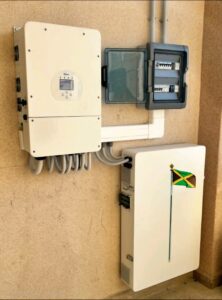
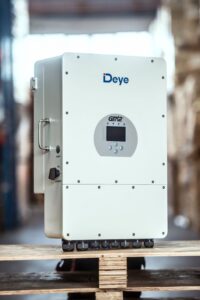
Excellent informative! As a solar energy customer I agree with everything that was outlined here. Go solar energy!
This was very informational and straightforward. All the important details along with some questions I had was covered. Dosolar is definitely the way to go for my next solar project.